St Margaret’s Hope (Admiralty House)
History
| < Intro | Δ Index | Occupants > |
St Margaret’s Hope, on a steep hillside overlooking the Forth, with the craggy eminence of St Margaret’s Head in the background, is the former residence of the Flag Officer Scotland and Northern Ireland and Naval Base Commander Rosyth.
The site has a fine view westward over the estuary, to the North, the Rosyth Naval Base; to the South, across the water, the harbour of Port Edgar and Hopetoun House; and to the East, the Forth Road and Rail Bridges.
The land on which the House stands was originally purchased in 1739 by the Dunfermline Guildry, being part of the lands of Ferryhill belonging to Dunfermline Abbey and Friary. The book ‘The story of Inverkeithing and Rosyth’, (Published in 1938 by the Rev William STEPHEN) says the land was acquired in 1825 by Elias Cathcart of Auchindrae who, in or soon after 1829, built the original part of the house and called it St Margaret’s. The name is derived from the story of Queen Margaret’s journey to Dunfermline. St Margaret fled from the Normans at the time of the Conquest seeking shelter from storms in South Ronaldsay in the Orkneys; the village where she landed was called St Margaret’s Hope the word ‘hope’ being once used to describe a roadstead where ships could lie at anchor in safety. In 1069 she sailed south and came ashore in the sheltered bay below these cliffs, hence the name of the house. She was given refuge by Malcolm CANMORE, the King, then living in Scotland’s ancient capital of Dunfermline; she founded the Abbey at Dunfermline and subsequently married King Malcolm.
In 1855 Captain William, ELDER, the Company of Artillery Volunteers, became the owner. He died in 1882 and it was from his nephew, W G ELDER, and the latter’s son, W H ELDER, that the Admiralty requisitioned the house for the Commander in chief Coast of Scotland in 1916. Subsequently the House and grounds were purchased outright during the First World War for £5,500 at which time the property became known as ‘Admiralty House’.
The Lodge, which was two cottages until 1916, is all that now remains of the original village and harbour. Five other cottages in various states of disrepair survived on the land below the driveway until the 1960s, when they were demolished to make room for the building of the lower garages. Of the small bay, which lent its name to the house, little now remains. This area, with the exception of the cove known as Cult Ness, was reclaimed during the First World War, using the debris excavated by the building of the Dockyard. The Marshland contains the remains of the narrow gauge railway used in the dockyard’s construction and the village and old quarry pier where ships were regularly berthed.
The Marsh provides a stable and protected habitat for several species of water fowl. It was here in 1954 that the Wilson’s Phalarope was first sighted in the UK. Now, although lacking statutory protection, this area is designated a site of interest by the Scottish Wildlife Trust and is recognised by Dunfermline District Council.
Approaching the house down the drive from the North Queensferry Road there is a large stone archway surmounted on either side by shields bearing Coats of Arms. The arch was knocked down by an inconsiderate lorry in 1987 but rebuilt in time for a visit by HM The Queen and HRH The Duke of Edinburgh in 1988.
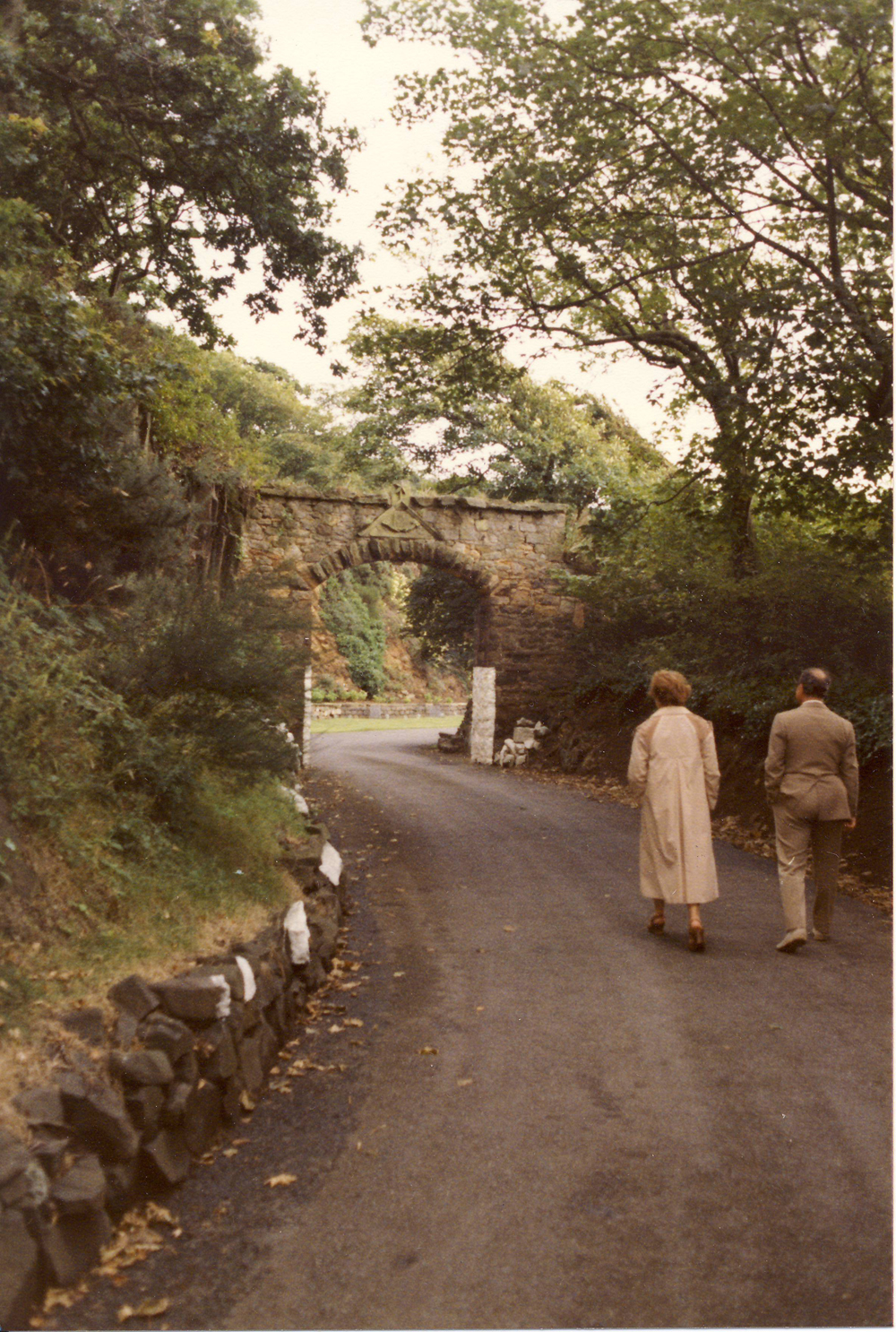

The shield on the south side bears the initials W N and I F with the date 1376. (For the connoisseur of Heraldry:- Arms: Per pale, dexter, or, on a bend Azure a crescent between two spurrowels of the first – NAPIER, Wright’s House, Scotland and sinister, Argent, three buglehorns Sable, stringed gules FORRESTER, Scotland.) The Latin motto ‘Sicut Olivafructifera’ translates ‘Fruitful as an olive tree’. The three hunting horns are the Arms of the Forresters of Corstorphine. So the combined Arms are therefore of William Napier and his wife, who would have been a daughter of the House of Forrester.
On the north side, the Coat of Arms has the initials W N and E P with the date 1570. (Again for the knowledgeable:- Per pale, dexter, Or, on a bend Azure a crescent between two spurrowels of the first NAPIER, Wright’s House, Scotland; and sinister, or, a fess chequy Argent and Azure between three stags heads couped gule PARK of that Ilk.) Again there is a motto in Latin ‘Didat Servata Fides’, which translates ‘Faith preserved maketh rich’. The Arms are those of William Napier of Wrychthouse, a Burgess of Edinburgh in the second half of the 16th century, and his wife Eliza Park. The shields belong to a much later period than the date they carry. It is almost certain that they have no historical connection with St Margaret’s. The presumption is that originally they formed part of the collection of armorial shields that are known to have existed at Wrychthouse, Edinburgh. They must have been acquired and set in their present position by a previous owner of St Margaret’s.
To the side of the arch is the old saluting base of the Commander in Chief Coast of Scotland. In more recent years the Admirals, now termed Area Flag Officers, have flown their flag in HMS Cochrane at Rosyth. The flag flying at the house today is only saluted by ships passing on ceremonial occasions, when the Admiral often acknowledges the salute from the Balcony, known as the Bridge.
The grounds, of about 20 acres, are mostly woodland but there is a walled garden of one acre, a putting green and tennis court. The summer-house situated above the garage was built by Ashburys at the turn of the century. It was originally the private railway carriage of the Admiral Superintendent of Rosyth Dockyard and was renovated and moved to its present position in 1985 shortly after the positions of Port Admiral Rosyth and Flag Officer Scotland and Northern Ireland were combined. At the same time the pergola by the lawn was erected. This is made up of old poles from the Dockyard which were probably once used to support staging for ships in dry docks. Also in the grounds are several mine watching posts dating from the Second World War and the remains of the Jetty used by the Admiral’s barge
The Inter-war years saw the virtual closure of the Navy’s most modern dockyard, to the exasperation of Admiral Beatty. The post of CinC Coast of Scotland was abolished in 1922 and the House was occupied for a short time by Captain NOBLE, Commanding officer Scotland. The decision was soon taken to sell or lease the house and it was Advertised in the Scotsman, Glasgow Herald and Times. It was eventually let on 22 May 1922 to a private tenant Mr J G Watson who died on 31 December 1931. His widow terminated the lease on 15 May 1932, but subsequently decided to take a new lease until 1 May 1933. The Royal Navy reoccupied the House on 22 July 1937 when Rear Admiral E C O Thomson CB DSO, Rear Admiral and Commanding Officer Coast of Scotland, moved in. Since then, apart from a short period when the House was divided up for the Chief of Staff and Admiral’s Secretary, the house has enjoyed virtually uninterrupted occupation by successive Flag officers and their families.
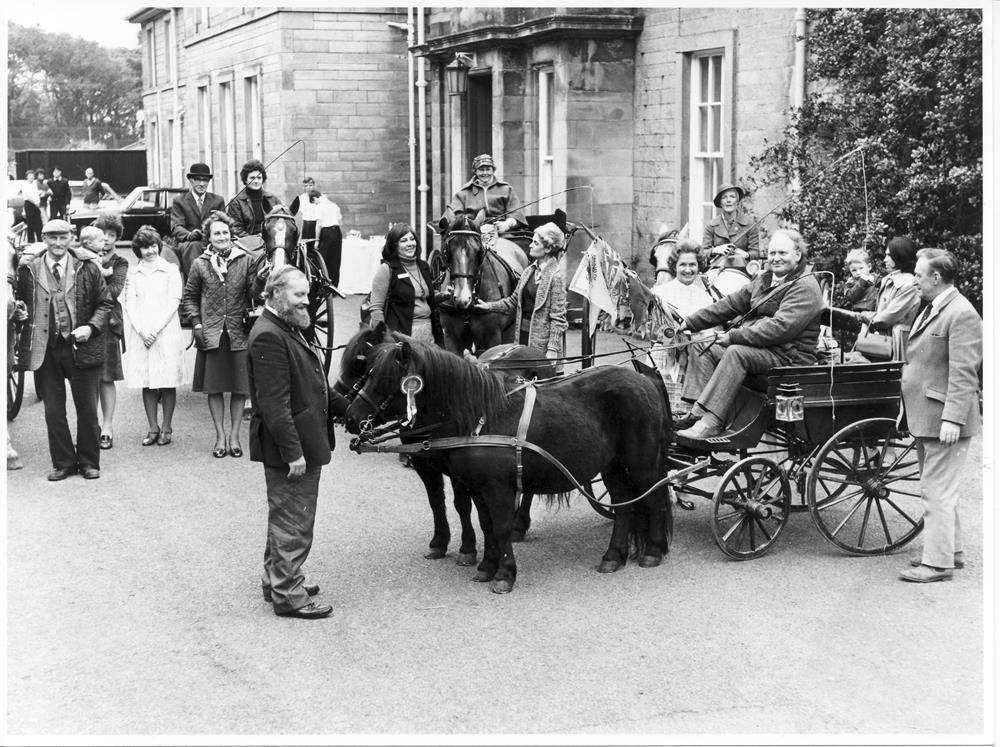 At the front door – “Driving for the disabled”
At the front door – “Driving for the disabled”
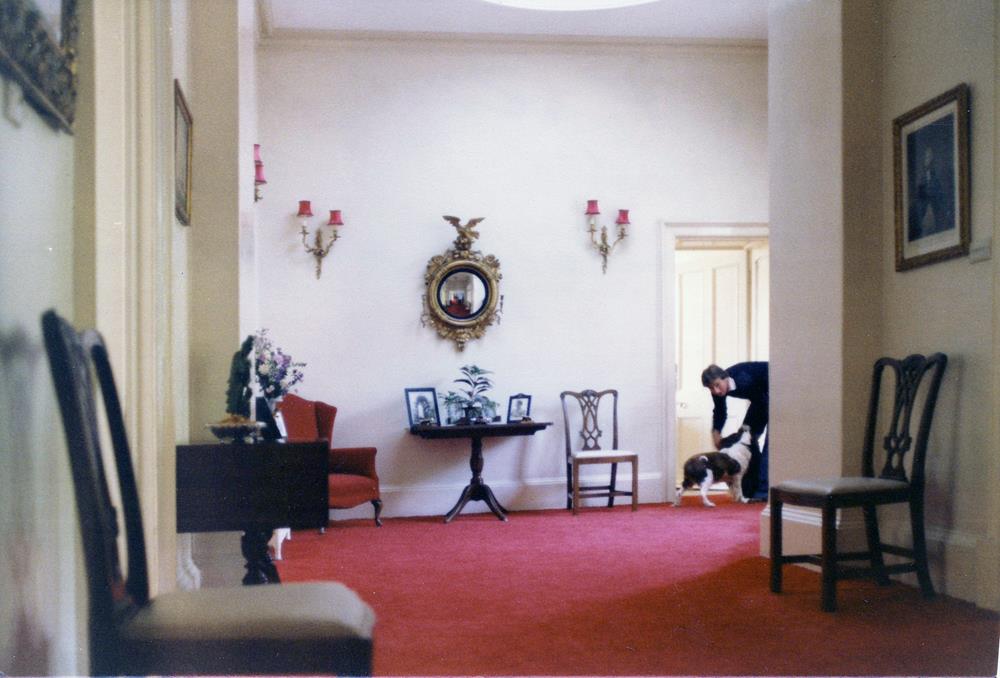 Inside the front door
Inside the front door
 The Drawing Room – one end
The Drawing Room – one end
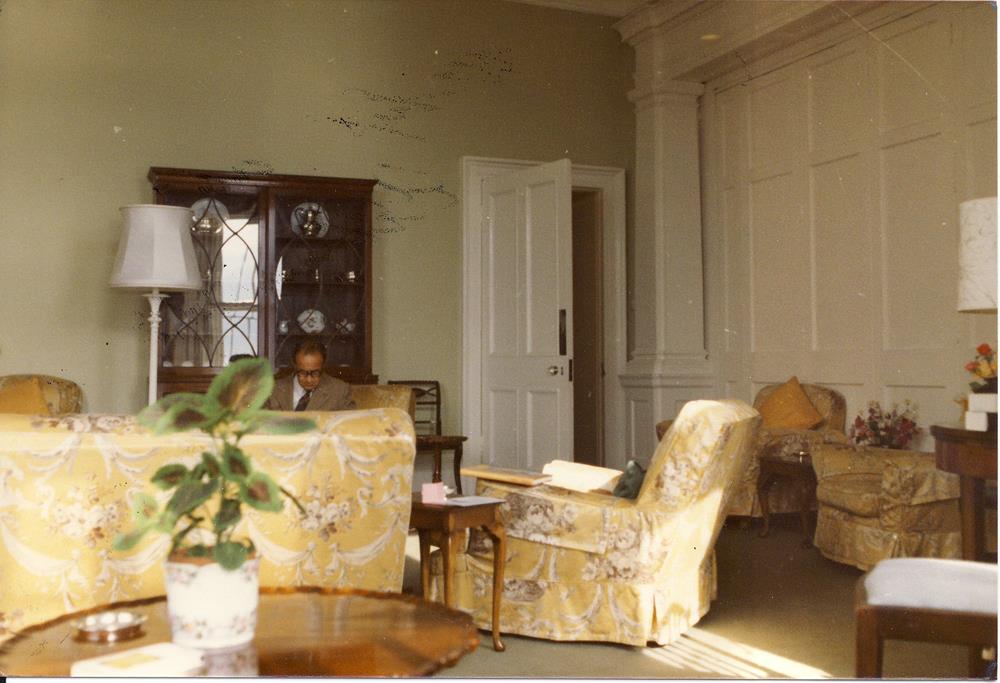 The Drawing Room – other end
The Drawing Room – other end
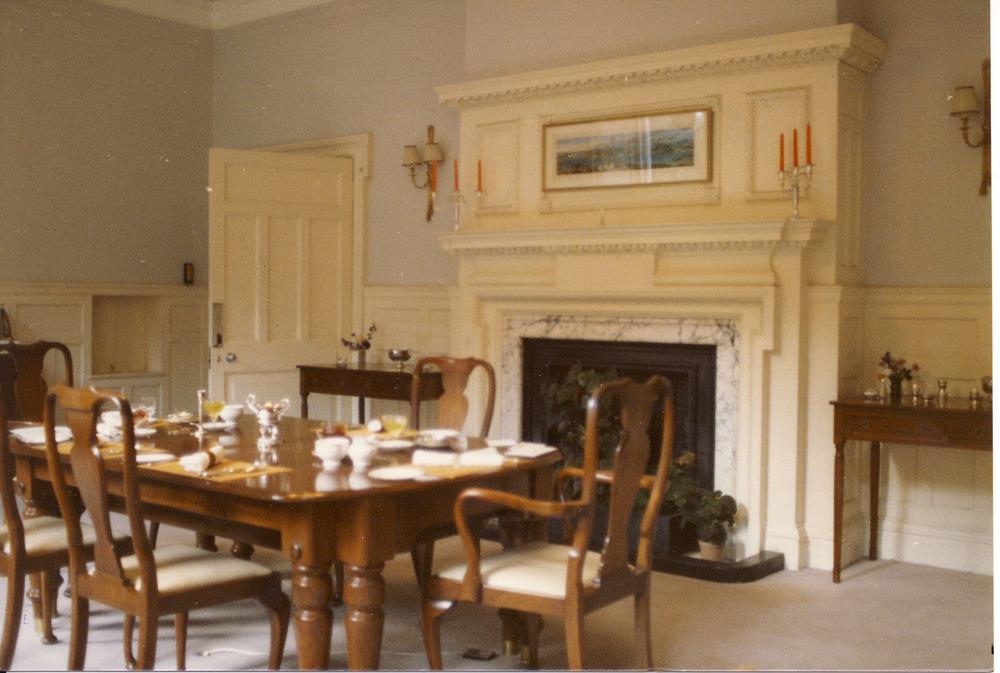 The Dining Room (the table could extend to double this length)
The Dining Room (the table could extend to double this length)
| < Intro | Δ Index | Occupants > |